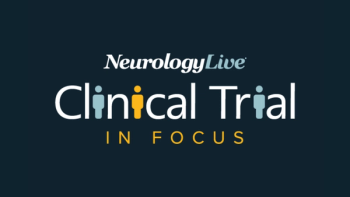
Vamorolone and Prednisolone Combination Appears Safe in Gene Therapy–Treated Patients With Duchenne
Key Takeaways
- Vamorolone and prednisolone combined with microdystrophin gene therapy showed no significant adverse events in two DMD patients.
- The 9-year-old patient experienced an asymptomatic troponin-I increase, which normalized quickly, indicating manageable cardiac monitoring.
A case series reveals safe use of vamorolone and prednisolone during microdystrophin gene therapy for Duchenne muscular dystrophy in two boys.
A presented case series of 2 boys with Duchenne muscular dystrophy (DMD) showed that concomitant use of vamorolone (Agarmee; Santhera Pharmaceuticals) and prednisolone while on microdystrophin gene therapy did not lead to any significant adverse events (AEs).
Presented as a poster at the
Over time, the prednisolone dosage was tapered down to 0.5 mg/kg/day at the 7-week mark, and fully tapered down to discontinuation around 12-weeks post-infusion. Between both patients, there were no observed significant AEs, all while undergoing traditional monitoring, including hepatic panel, troponin-I, platelet counts, and GGT.
Led by Martha Lee Finch, MD, a physician and faculty member of the
As a result of the increased troponin levels, the patient was admitted to the cardiology service, where echocardiograms were shown to be stable with normal ejection fraction. Within a short time, troponin-I levels started to trend down near the original baseline level (327 ng/L), and the patient was ultimately discharged the next day. Of note, no efficacy data was presented in the poster.
The gene therapy used in the study was delandistrogene moxeparvovec (Elevidys; Sarepta), the only such approved therapy on market for DMD. Vamorolone,
Gene therapy for DMD aims to deliver microdystrophin gene to restore dystrophin expression, while vamorolone addresses inflammation and muscle damage, both considered central to disease progression. Because gene therapy doesn’t immediately halt inflammation or muscle breakdown, continuing corticosteroid therapy remains necessary to control immune responses and optimize muscle function.
Typical protocol for Elevidys calls for prednisone or deflazacort to start before infusion–often 1-2 weeks prior–and continued for weeks to months afterward, depending on patient response and lab monitoring. The dose and taper duration of corticosteroid therapies are individualized based on ALT/AST liver enzyme trends, creatine kinase levels, and symptoms.3 In addition to vamorolone, researchers have explored whether adding complementary drugs, like utrophin modulators or anti-inflammatory agents, could enhance durability and muscle repair.
Recently, through a collaboration between the Muscular Dystrophy Association (MDA) and Parent Project Muscular Dystrophy, a group of experts published new consensus guidelines for safe and equitable use of gene therapy in DMD. The recommendations, which apply to Elevidys and other products in clinical development, reiterate the importance of experienced, multidisciplinary care teams, standardized protocols for monitoring and managing adverse events, and real-time safety surveillance and transparent reporting.
Following the publication of these new guidelines, NeurologyLive® sat down with senior author
REFERENCES
1. Finch M, McGowan B, Schwaede A, Kuntz N. Concomitant use of vamorolone and prednisolone during microdystrophin gene replacement with delandistrogene moxeparvovec: a small case series.
2. Catalyst Pharmaceuticals Reports FDA Approval of AGAMREE® (vamorolone) for Duchenne Muscular Dystrophy Granted to Santhera Pharmaceuticals. News release. Catalyst Pharmaceuticals. October 26, 2023. Accessed October 9, 2025. https://www.globenewswire.com/en/news-release/2023/10/26/2767947/13009/en/Catalyst-Pharmaceuticals-Reports-FDA-Approval-of-AGAMREE-vamorolone-for-Duchenne-Muscular-Dystrophy-Granted-to-Santhera-Pharmaceuticals.html
3. Package Insert – ELEVIDYS. FDA. Accessed October 9, 2025. https://www.fda.gov/media/169679/download
Newsletter
Keep your finger on the pulse of neurology—subscribe to NeurologyLive for expert interviews, new data, and breakthrough treatment updates.




































